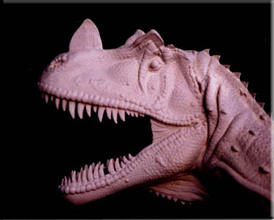Cavidad endocranial en dinosaurios ornitisquios. Nueva evidencia
 New evidence on brain−endocranial cavity relationships in ornithischian dinosaurs
New evidence on brain−endocranial cavity relationships in ornithischian dinosaursDAVID C. EVANS Evans, D.C. 2005. New evidence on brain−endocranial cavity relationships in ornithischian dinosaurs. Acta Palaeontologica Polonica 50 (3): 617–622.
Discussions of brain morphology and relative brain size in nonavian dinosaurs have been complicated by uncertainty in the extent to which the brain filled the endocranial cavity.Recently reported vascular imprints (valleculae) on the endocranial surfaces of the braincase suggest that nonavian maniraptoriform theropods had brains that tightly fit the endocranium. Similar impressions of the intracranial vascular system are reported here in two ornithischian clades, Hadrosauridae and Pachycephalosauridae. These structures are more widespread in dinosaurs than previously thought, and suggest that the brain closely fit the endocranium in some regions of the forebrain through hindbrain in several distantly related dinosaur groups.

















